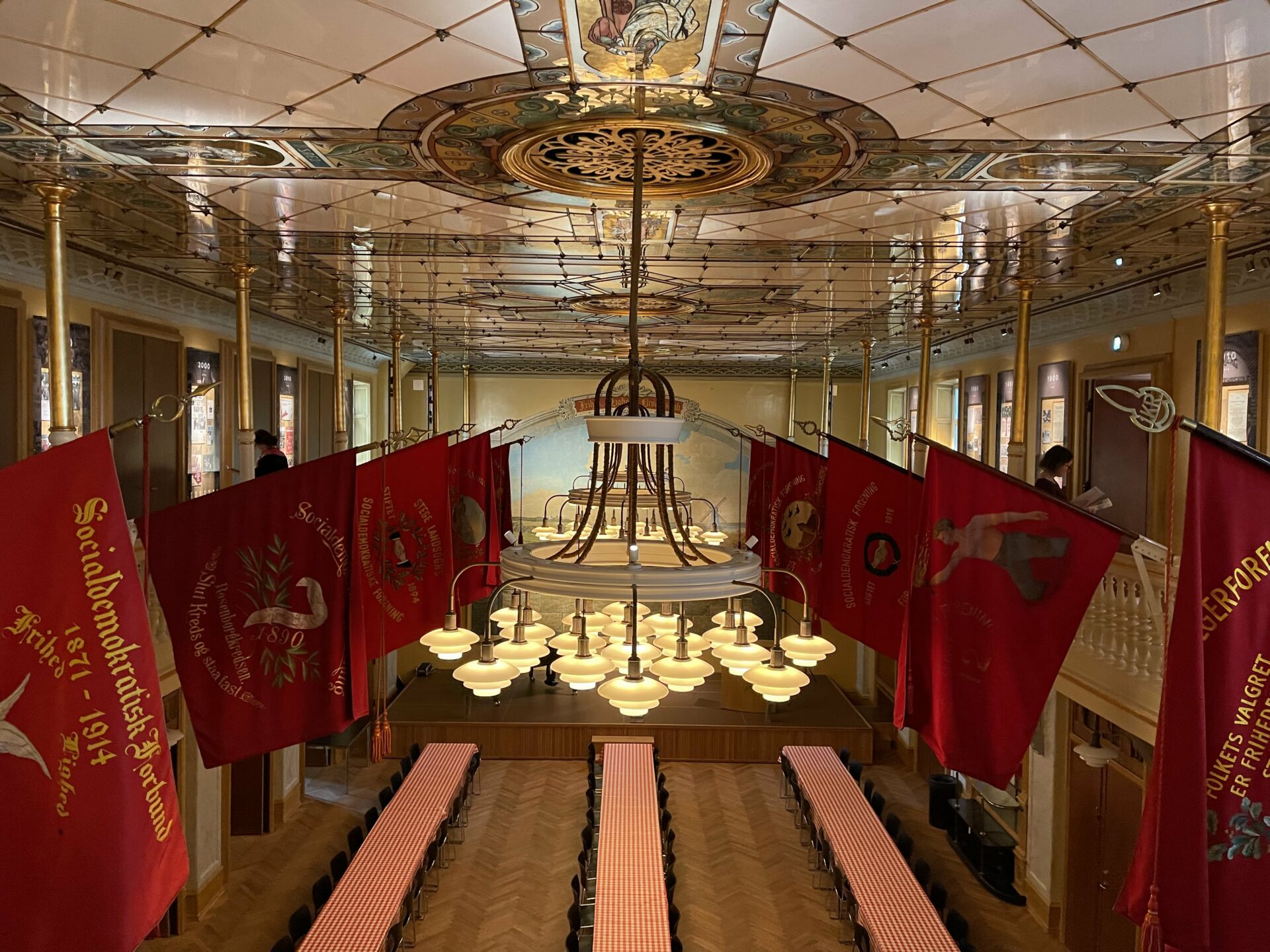This article has partner links that I may receive compensation from at no cost to you. Thank you for supporting my site by using them!
Most history museums focus on the history of the rich & powerful. To really get to know a place, it’s better to learn about the history of the working class. The Workers Museum in Copenhagen, Denmark provides an excellent insight into the people who made the country what it is today.
Workers Museum Visitor Information
The Workers Museum (official website) is located near Nørreport in central Copenhagen. It’s right near hop-on, hop-off bus routes as well as other public transportation lines. There is an admission fee unless you are a local union member. Entry to the Workers Museum Copenhagen is included with the Copenhagen Card.

Highlights of the Workers Museum
The Workers Museum is located inside the Workers’ Assembly Hall, which has been open since 1879. It’s the oldest workers’ assembly hall in Europe. Due to its historic importance, it has been nominated as a potential UNESCO World Heritage Site. In 2023, it won the Council of Europe Museum Prize.
The museum, which opened in 1983 & is dedicated to the workers of Denmark, starts with the Banquet Hall. The Banquet Hall was used for trade union gatherings. It’s an impressive room, with various union flags hanging above long tables.

I also spotted a wooden trade carving I had seen in stone above another building in Copenhagen. The Workers Museum also has other wooden carvings from other trade unions.
Book your hotel in Copenhagen now!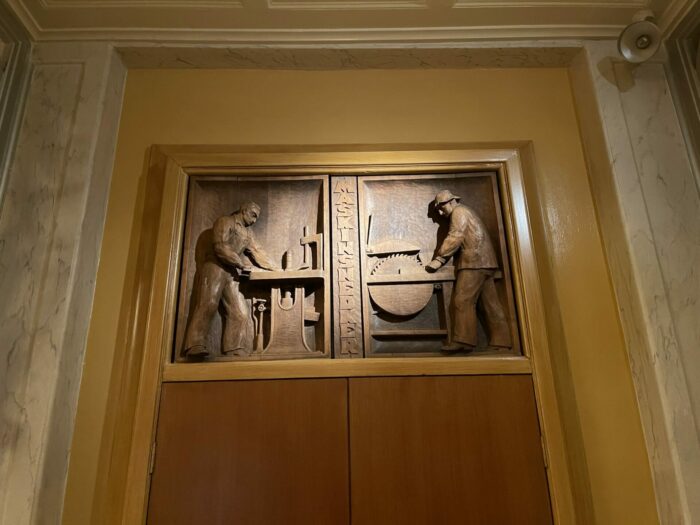
The Banquet Hall has documents from the construction of the building as well as the local unions. There are even details about other union halls from around the world inspired by the Danish.
This floor also has a coffee shop. Coffee shops such as these were popular with workers in Copenhagen in the 1950s. The museum coffee shop has original furniture from the era and serves coffee, cakes, other snacks, and beer.
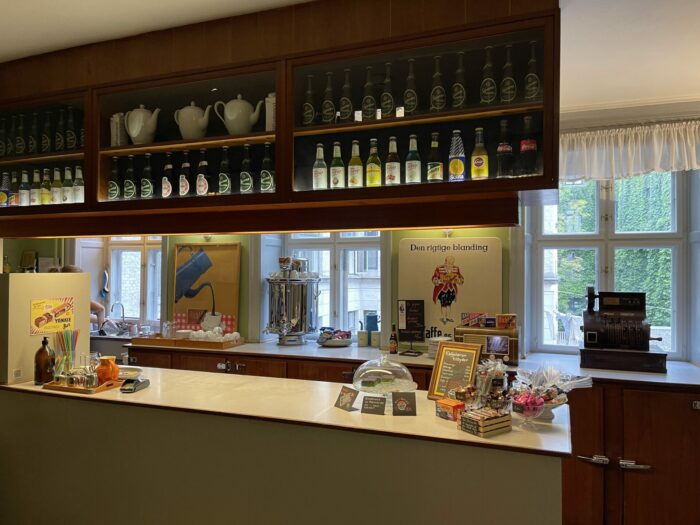
The museum is also home to the Café & Ølhalle “1892”, which offers 22 different kinds of smørrebrød and other dishes.
On the balcony overlooking the Banquet Hall, there are displays with photos & documents telling the history of the Danish labor movement between 1871 & 2021. Everything is in Danish, however, English paper guides are available.
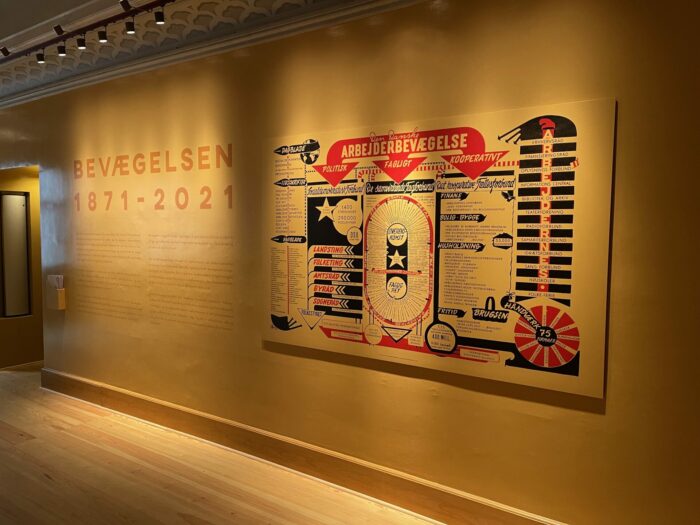
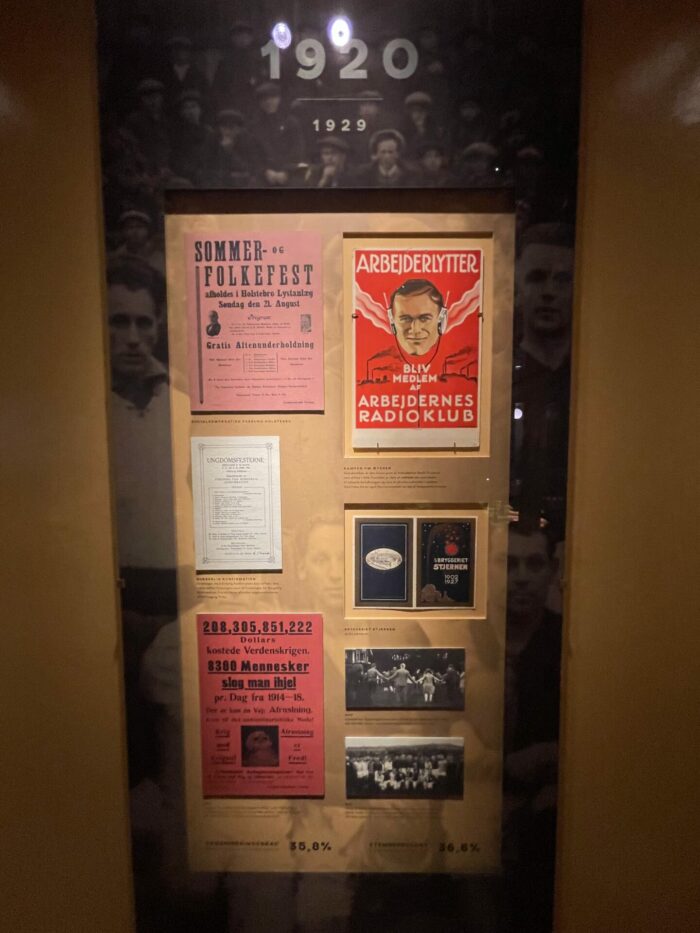
There is a temporary art installation in the space that leads to the next section of the museum, the family house. Other temporary exhibits can also be found around the museum, discussing topics such as activism in Denmark and political art.
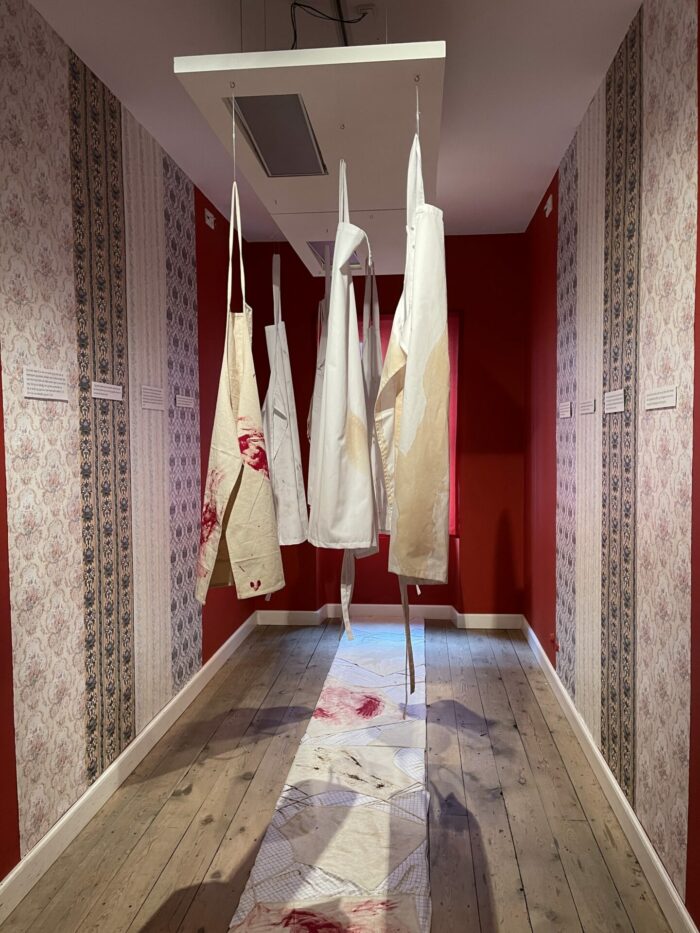
The second part of the Workers Museum gets closer to actual Danish workers through the story of the Sørensen Family. This space used to be their apartment in the late 1880s. The rooms are decorated as they were back then.

The museum talks about their lives & their working-class jobs. The father worked at a distillery, while the son worked on the docks.
Next is the new apartment the family moved to in 1915. The apartment was gifted to the museum by the family after having been passed down through the generations.
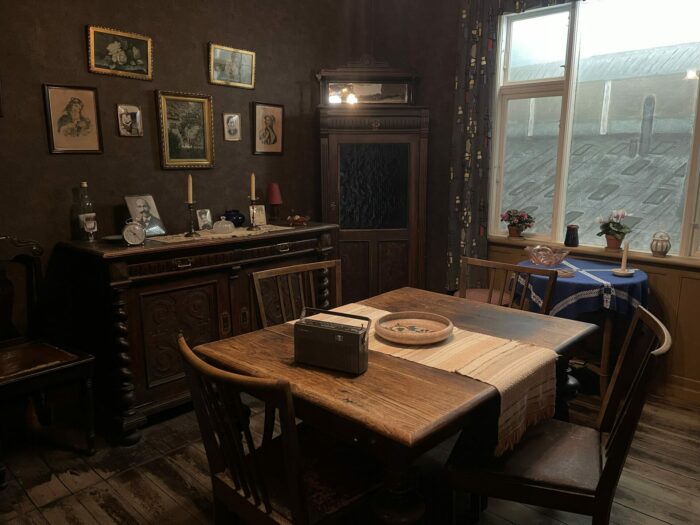
On the third floor of the Danish Workers Museum, there are displays for specific industries. This part of the museum doesn’t just cover older trades, but it also talks about how modern industry has evolved and become global through jobs such as machinists & operators.
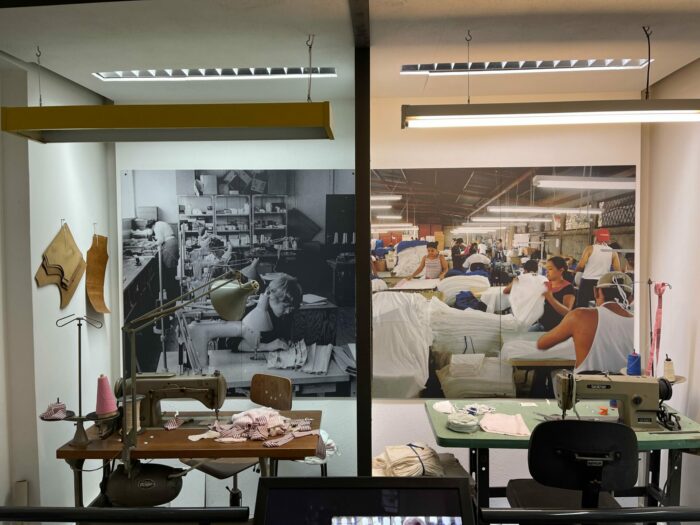
For each trade, the exhibits show how things have or haven’t changed over time. There are sections about the advantages and drawbacks of work, as well as control & discipline.
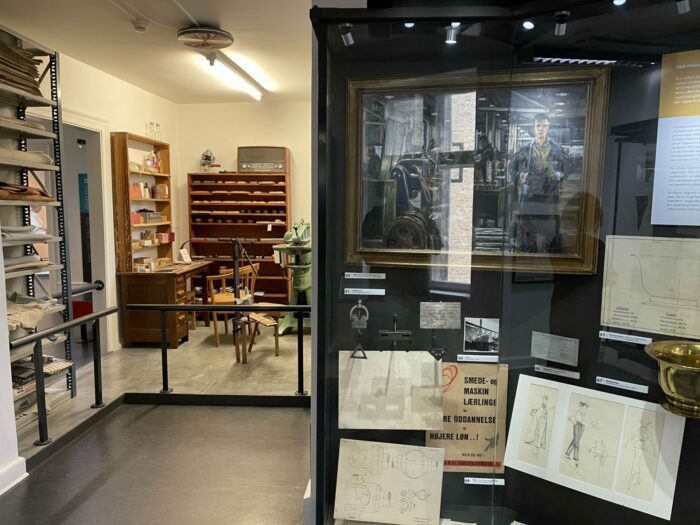
All of it is relevant today, with a forward-looking focus rather than toward the past like the rest of the museum. As a result, it ties the whole museum together to provide insight into modern Danish society.
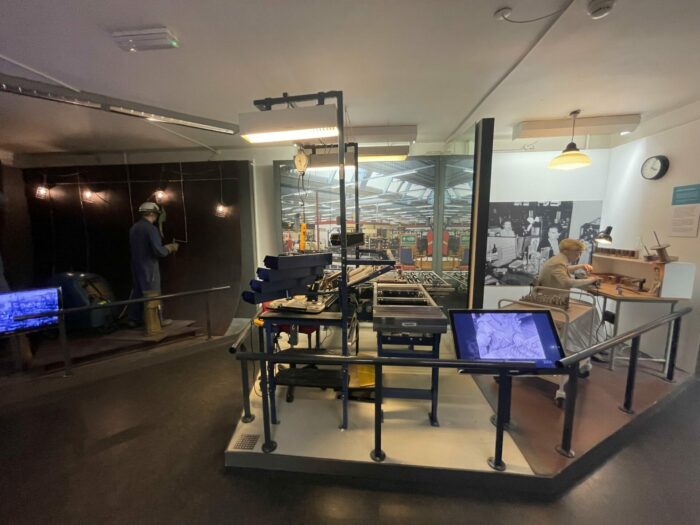
The attic of the Workers Museum Copenhagen has an archive reading room, as well as the archives of the Danish labor movement.
Back on the ground floor is the Workers Museum for Children. This area is about working-class children and how they lived, worked, and played. Admission is free for kids.
There are plenty of kid-friendly activities, including costumes & play areas, with each little room having a different work or home-related theme.

The final section of the Workers Museum is dedicated to Thorvald Stauning. Stauning was the first worker & Social Democrat to become the Prime Minister of Denmark. In addition to seeing some of his belongings such as his desk, visitors can put on a majestic beard like his.
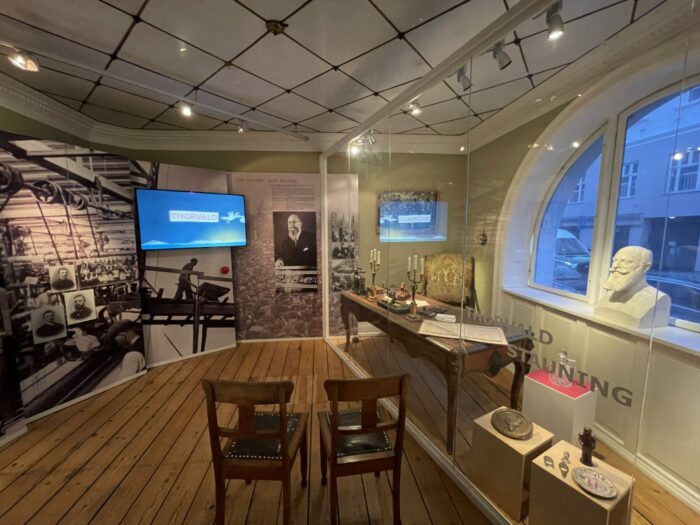
The Workers Museum Copenhagen is an excellent museum about the past 150 years of Danish life, told through the eyes of its workers. Between the details about various trades and the historic home reconstructions, it paints a comprehensive picture of the evolution of Denmark. It’s one of the best museums in Copenhagen.
Here are some great Copenhagen tours & activities & other things to see & do in Copenhagen.
If you’re looking for a place to stay in Copenhagen, check out these hotels. For restaurant recommendations, go here.

